With a dedicated and revamped area, fashion marks eBay’s next big push into the fixed-price arena, but will customers take to the shift in focus and will it succeed in a crowded market
With almost a quarter of UK online shoppers visiting its site every week - almost five times the number of visits to Amazon - eBay is a true online giant.
And while best known as an auction site, eBay is increasingly moving into fixed-priced trading. EBay continues to transform the market and is poised to make a splash by establishing a name for fixed-price fashion and pushing its apparel credentials hard.
Changing perceptions
From its origins almost as a virtual car boot sale, connecting buyers with sellers who often shipped stock from their front rooms, eBay has extended its ecommerce tentacles. As well as the 7.4 million people in this country who have sold something on the site in the past 10 years, 128,000 registered businesses today trade on the site.
Fixed-price sales now account for 56% of eBay’s global business and, with the launch of its new fashion section next week backed by a massive advertising push, the business is making a concerted push to shift consumer perceptions that it is just an auction site.
Many retailers including House of Fraser, Ted Baker, M and M Direct and Office sell goods on eBay’s outlet section. EBay has ramped up that aspect of the business, actively seeking new retailers to join the site to sell excess inventory and take advantage of the volume of traffic that it attracts.
With 17 million visitors visiting the UK site each month, a presence on eBay can be a very attractive and lucrative proposition for retailers.
The intention is that the new fashion area, which launches next week, will have the look and feel of a fashion website with better images and branded areas to showcase the offers.
EBay head of clothing, shoes and accessories Xin He says: “EBay has long been one of the most visited clothes shopping sites on the internet. But shopping on eBay for clothes until now has been pretty much the same experience as buying a CD or a digital camera.
“We are making changes to the clothes shopping experience to help buyers find the deals and brands they are looking for in a simpler and more visually inspiring way.
“By doing this we are also unlocking the potential for retail partners, making it easier for them to reach the millions of shoppers who visit eBay every month,” she says.
The question now is whether eBay can change customer perceptions and stay ahead in a competitive market where bricks-and-mortar retailers and pure plays alike are ramping up offers on technically and visually advanced websites and aggressively chasing market share.
Verdict senior analyst Malcolm Pinkerton says that the way online retail has evolved so quickly has forced eBay to change its strategy. “Five or 10 years ago eBay was online shopping but has moved on from there. Auction is still a big part of the business but if you look at what Amazon has done with its marketplace it [eBay] had to respond.”
He adds: “It may upset some smaller sellers and hardcore eBay fans but they had to do it.”
Pinkerton highlights the big retailers entering the online fashion arena this year, such as Gap and Zara, and raises concerns that eBay has been slow to react.
“EBay will need big brands on there and consistency of offer,” he says. “It is also up against more high street retailers that have cross channels and big pure plays such as Asos.”
The progression from where eBay was and where it is now has been a steady one over the past few years.
In September 2008 the etailer reduced the cost of listing items to encourage bigger sellers to its site and last year introduced its outlet section for brands and retailers.
EBay bosses think sales from its big sellers and retailers can hit £1bn in the next four years. Although fashion is its first big push, there are other successful categories that could lend themselves to future fixed-price offensives.
Vaulting ambition
The new fashion area of the site, that will launch next week will be restricted to the UK and Germany but eBay’s US parent has been testing various approaches to selling fashion too.
Its design collaboration with high-profile US designer Narciso Rodriguez was a first for the business and the PR opportunities provided a way to help shift customer perceptions.
In the US it is also running private sales for higher-end brands on its newly launched Fashion Vault area.
If UK managers believe there is appetite for such an approach in this country then it may be tested here too.
Private sales sites such as Brand Alley and Vente-Privee have not yet caught on among mass-market shoppers and it is such businesses that may feel the heat most from eBay’s fashion push according to Michael Ross, director of online consultancy eCommera. “If you are a discount aggregator then this is a real threat,” he says.
However, he sees eBay as providing a good opportunity for retailers. “Most are looking for ways to become less dependent on Google by finding other routes to customers,” he observes.
He also points out that because eBay does not sell any of its own inventory it is still more a technology platform than a retailer. That may make it a more appealing option than Amazon, which does compete against those selling on its marketplace with its own offer.
Ross says that eBay must make sure that it maintains clarity of purpose - something Amazon excels at. “It must continue to innovate as its competitors are and stay important enough for retailers to keep it as part of their businesses,” he says.
Branded fashion etailer M and M Direct already sells on eBay and chief executive Steve Robinson says it works well for him. “It is just like another affiliate and, like Amazon, it is trying to become a shopping portal,” he says. “For us it is important that we are in all the relevant places where our customers are.”
Other retailers such as Schuh and Office have achieved great success trading on eBay and many retailers find they can shift excess stock at higher margins than through clearance in stores. For some, eBay can become a multimillion pound revenue stream.
Some brands, particularly in the luxury sector, still see eBay as a threat to their brand integrity and sometimes counterfeits slipping through the net have been a real issue. However, eBay works hard to limit such occurrences and has created the Verified Rights Owner programme so that a brand, for example, can report a listing that infringes its rights.
Deal or no deal
What is certain is eBay will continue to be one of the most important online players and has plans to keep evolving its fashion offer, with continuing high-profile marketing campaigns across the year, and is looking at bolstering its fashion area by drawing together specialised offers already present on the site, such as vintage clothing, in one place.
EBay never claims to be in fast fashion and says its customers are fashionable without being slaves to the latest trends. As such, a dress that is one season old - and so may not suit an Asos or Topshop shopper - is not a problem for a typical eBay shopper.
Since the start of the recession many retailers have said how savvy shoppers have become and there are fewer savvier than eBay shoppers, always looking for a deal.
EBay communications director Richard Kanareck says: “Savvy shoppers first and foremost want the best deal, and understand that the absolute latest version of a product doesn’t always deliver that.”
Kanareck is confident that it will retain its top spot: “We have been the number one in ecommerce for the past 10 years by constantly innovating and responding to what our customers tell us they want - which is great deals and wide selection, all in a trusted environment.”
He adds: “We are only just starting to unlock the whole discount or off-season market.”
EBay also emphasises that it will not abandon its auction offer and it remains a revenue stream for thousands of sellers across the world. The fashion outlet is an extension of one part of its business rather than a replacement of another part.
Kanareck says: “EBay is all about connecting buyers and sellers around the widest selection of deals, regardless of format, seller size or type of item. We have a vibrant consumer marketplace providing unique inventory, with an incredibly powerful and fast-growing B2C business. The fashion outlet adds yet another reason for more people to shop more on eBay, which benefits the whole marketplace.”
Another big growth area for eBay is mobile commerce. Across its business last year it recorded $600m (£396.1m) of revenues through orders from mobile phones. An item is now bought via a mobile phone in the UK every 12 seconds and it has projected it will make $1.5bn (£990.3m) sales from that channel this year.
Celebrating its 10th birthday in the UK last year, eBay is still, compared with its high street counterparts, a relative baby. Now, however, it may be about to hit a more awkward teenage period as the phenomenal growth opportunities that online has allowed in the past decade become ever more elusive.
“Ecommerce is still in its infancy and still only a small percentage of retail as a whole so there is a lot of opportunity ahead,” Kanareck stresses.
As the next decade of ecommerce begins eBay is in pole position, but with ever more competition it will have plenty to do to stay ahead of the game.
Ebay in numbers
- 38.2m People who have used EBay.co.uk
- 7.4m Number of people who have sold something on the site
- 1bn About the number of items sold on eBay in the UK
- 17m Visitors to EBay.co.uk each month
- £2.89 The price of the first item sold on EBay.co.uk, the Scorpions track You and I
- 6 The number of pairs of shoes sold every second on EBay.co.uk
- 2 The number of handbags sold every second on EBay.co.uk





















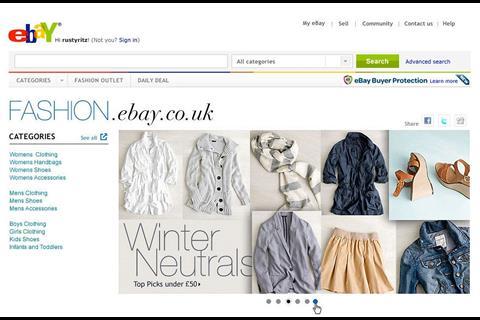


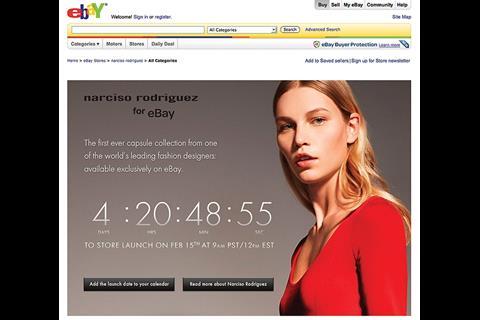
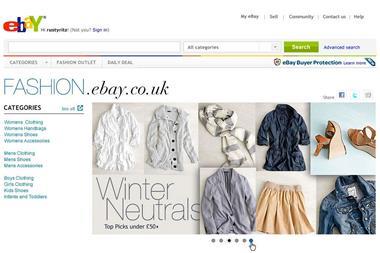

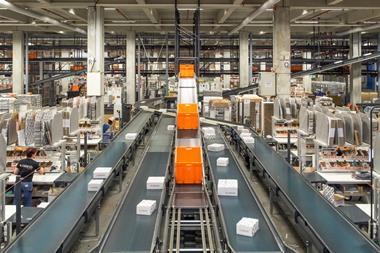

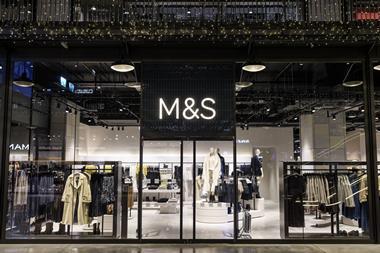

No comments yet